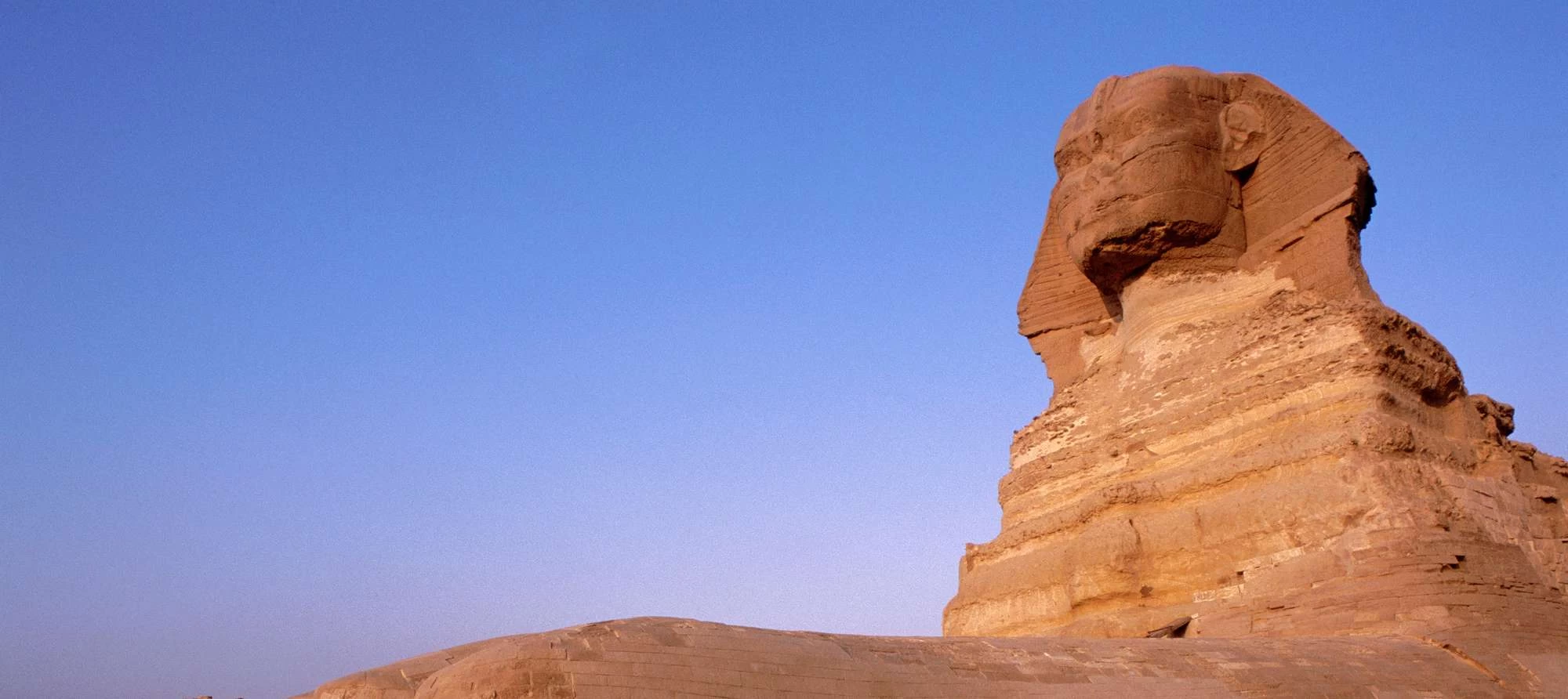


The Sphinx of Egypt is possibly the most renowned icon of ancient cultures, which brings millions of tourists and scholars traveling across the globe for Egypt trips. This gigantic statue can produce an amazing impact on people who have even seen it once and brings to mind grandeur in ancient Egyptian culture. In this blog, we will analyze several dimensions of the Sphinx, namely its history, its significance, and the myths that still surround it today.
The Sphinx of Egypt has become a potent symbol of power and mystery in this world. Great Sphinx of Giza facts reveals that it stands here in the form of a great statue with the body of a lion and the head of a man, signifying the combined strength of an animal and the intelligence of man, thus representing the power of the pharaohs. The body of the lion is courageous, and the human head is mainly believed to be a representation of the pharaoh, guardian of tombs and temples.
In different phases of Egyptian history, he was always treated as a protector and guardian. Its location was very emphatic as it was set near the Great Pyramids of Giza and added to its symbolic value because of the association it held with the divine power of the rulers. This is an icon, that has long served under the aegis of royal might and protection, an illustration of the majesty of ancient Egypt.
The debate regarding the origins of the Sphinx has continued for centuries among historians and archaeologists. Great Sphinx of Giza history suggests that the most widely accepted theory is that it was built during the reign of Pharaoh Khafre about 2500 BCE. Some, however, believe the Sphinx predates this period. The wear on its surface and the surface water erosion patterns on the body have led some researchers to argue that it might be much older than accepted by tradition, even going back to a time before the rule of Khafre.
Even with studies and explorations going on, the very purpose of the Sphinx remains a mystery. What exactly was it for: were these only symbolic structures of royal power, or were they for some religious or astronomical purposes? The complete lack of records dating back to the very time of its construction only allows various competing theories to flourish while adding even more richness to this ancient structure's aura and mystique.
The Sphinx in Egypt is religiously integrated into the Egyptian ancient religious beliefs and practices; it combines human and animal forms and may be seen to symbolize a reconciliation or merging of earthly and divine powers, a recurrent motif in Egyptian mythology. The highly relevant Sphinx is said to face the sun god Ra, oriented to the sun itself, thus further associating it with this divine power of the gods.
Besides Ra, the Sphinx links up with the Egyptian notion of guardianship, as it was supposed to guard these entrances to the sacred places, the temples, and the tombs so that only the worthy might enter. The sheer bulk and weight of the Sphinx would have kept evil spirits at bay and served to assure its reputation as a distant guard of divine protection and power.
So much significance has been bestowed upon the Sphinx in setting the cultural, ethnic, and historical identity of Egypt. Egypt luxury tours often highlight its importance, as for many ages, it has remained a central figure in Egypt's mythology and has exerted influence upon art, literature, and architecture. The Old Sphinx has surfaced in varied guises in statues and paintings, stimulating generations of people seeking the history of ancient Egypt.
The Sphinx stands for more than just a physical monument; it has also come to symbolize Egypt, signifying the timelessness of its civilization. Throughout history, the Sphinx has intrigued both the Egyptian common man and the Westerners, embodying the mystery and pride of an ancient government that continues to lure the eyes of the world today.
In recent years, archaeologists and others have continued to unearth discoveries around the Sphinx. Cairo tours often highlight these findings, as the surrounding structures' excavation has provided vital information on how the Sphinx could have been employed in religious ceremonies and rituals. Furthermore, these discoveries have equipped scholars with new levels of broader understanding of the place of the Sphinx in ancient Egyptian society.
Studies around the Sphinx have spun new theories about its construction and purposes. Researchers are still at work to uncover the many dubious secrets of the Sphinx with the help of modern technology like 3D imaging, and ground-penetrating radar. Progress in these studies will probably help to provide new insight into one of the most enigmatic monuments in the world.
The Egyptian Sphinx has been attracting the attention of all sorts of people. From historical origin and symbolic significance throughout the ages down to its place in the modern popular domain, the Sphinx represents more than just a relic of the past. It remains the last testament to that inventive creativity and artistic and mysterious ancient Egypt concealed within it yet held intact to initiate research and awe among the people of the day.

Copyright © 2024 All Rights Reserved
